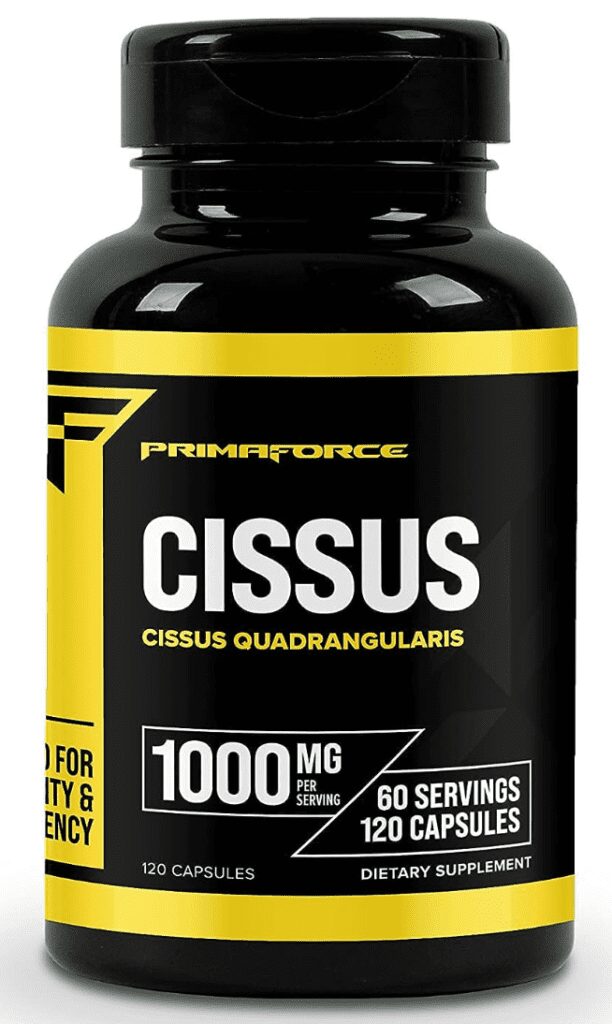Cissus Quadrangularis Benefits: The Bone-Boosting, Inflammation-Inhibiting Secret
Ah, gather ’round my curious compadres, for we’re about to embark on a botanical escapade! Imagine a plant that’s been a hidden treasure in the annals of ancient medicine, waiting for its moment to shine. Enter Cissus quadrangularis, a mouthful of a name for a vine that’s got more stories to tell than a nosy neighbor.
History in a Vine: Indigenous to the sandy plains of India and Sri Lanka, Cissus quadrangularis has slipped through the grasp of many a forager, growing discreetly amidst other foliage like a botanical ninja. But our ancestors weren’t ones to let a good plant go to waste. They stumbled upon this four-angled gem and began using it in traditional medicine for eons, because why not, right?
Modern-Day Marvel: Fast-forward to today, and we’ve got researchers and supplement enthusiasts alike exploring the potential of this underdog vine. Packed with phytochemicals like triterpenoids and flavonoids, it’s like the vine’s whispering, “Hold my roots, I’ve got this!” But let’s not get ahead of ourselves – there’s a whole garden of questions waiting to be plucked.
What’s the Buzz about Cissus Quadrangularis Benefits?
Flexibility, Thy Name is Cissus: Imagine if your joints had an anthem – it’d be played by Cissus quadrangularis! One of its notable claims to fame is supporting joint health. It’s like the vine’s saying, “Hey, I’m here to make your creaky hinges feel more like well-oiled doors.”
Bone Boost: But don’t be fooled into thinking this vine only cares about your joints – it’s got a bone to pick with bone health too. Some studies suggest it might just lend a hand in maintaining bone density, like a natural scaffolding whisperer.
Lose the Weight, Keep the Energy: And if you’re thinking of shedding a few extra pounds, Cissus might just be the workout buddy you didn’t know you needed. It’s been linked to supporting weight management and even taming that ravenous appetite.
How Does Cissus Quadrangularis Work Its Magic?
Collagen’s Confidante: You know collagen, right? The protein that’s like the architectural blueprint for your skin, bones, and connective tissues. Well, Cissus quadrangularis seems to have a knack for cozying up to collagen, potentially supporting its production and throwing it a “You got this!” cheer.
Oxidation’s Opposition: Oh, and don’t forget antioxidants! These little warriors wage a constant battle against those pesky free radicals that love wreaking havoc in your body. Cissus appears to join the antioxidant army, brandishing its phytochemicals to help keep oxidative stress at bay.
Anti-Inflammatory Avenger: Ever felt like your body’s a battleground of inflammation? Cissus might just be the hero you need, with some research hinting at its potential to calm the fiery flames of inflammation.
Are There Cons to Cissus Quadrangularis?
Thorny Side: Before you jump onto the Cissus train, let’s talk about a few thorns in the vine. Some folks might experience gastrointestinal discomfort, like an unexpected bellyache after indulging in too much ice cream – a bit of a bummer, but manageable.
Caution with Medications: Now, if you’re on a first-name basis with prescription drugs, be sure to consult your doc before dancing with Cissus. It might do a tango with certain medications, potentially affecting how your body processes them.
Moderation, Dear Watson: Remember, my inquisitive comrades, moderation is key. Too much of a good thing can turn it into a not-so-good thing. Stick to recommended doses and give your body some breathing room.
How Does Cissus Quadrangularis Play with Others?
Collagen Crew: If you’re already downing collagen supplements, Cissus might just be the harmonizing voice in your supplement choir, potentially enhancing collagen synthesis and giving your skin that extra glow.
Vitamin D Duo: Vitamin D and Cissus could be the dynamic duo of bone health. Vitamin D helps with calcium absorption, and Cissus might just tag along, making sure those calcium ions are put to good use in building bone density.
Medication Mix: Now, if you’re teaming up with medications, be the captain of your health ship and consult a healthcare pro. Some medications might get a little rattled when Cissus comes to town.
How Much Cissus Quadrangularis Should You Take?
Dosing Dilemma: Ah, the age-old question – how much is too much? It’s like figuring out the perfect amount of cheese on a pizza. But fear not, for typical doses of Cissus extract range from 1000 to 3000 milligrams per day. Start low and slow, and let your body’s whispers guide you.
Can Cissus Quadrangularis Boost Testosterone?
Testosterone Tango: Ah, the hormone that’s got folks flexing their metaphorical muscles. While some studies hint at Cissus’s potential to give testosterone levels a nod, it’s not quite a full-blown testosterone carnival. It might play a part, but it’s not the whole jazz band.
What Are the Side Effects of Cissus Quadrangularis?
Side Effects Rodeo: Like a wild ride at the county fair, Cissus might come with a few spins and twirls. Some folks report sidekicks like headaches, a touch of indigestion, or maybe even a bit of restlessness. But remember, these side effects don’t always RSVP to the party.
Is Cissus Quadrangularis Safe for Long-Term Use?
The Long Haul: Now, the million-dollar question – can you make Cissus a lifelong pal? Well, the research isn’t handing out trophies just yet. While short-term use seems to have its perks, the safety of long-term companionship is still being deciphered.
Does Cissus Quadrangularis Interact with Birth Control?
Contraception Conundrum: Ah, the delicate dance of birth control and botanicals. While Cissus isn’t necessarily known for crashing this party, it’s always wise to consult your birth control maestro before introducing any new players to the ensemble.
So, there you have it, my fellow knowledge seekers! Cissus Quadrangularis – a vine with tales to tell, benefits to bestow, and a few caveats to consider. Remember, in the world of supplements, it’s not just about jumping on the bandwagon; it’s about understanding what the band is playing and whether it’s in tune with your own unique rhythm. Go forth, armed with wisdom, and make your choices with a wink and a nod to Mother Nature’s green wonders.
Trusted and Verified Scientific References
- “This plant is a rich source of carotenoids, contributing to its vibrant color.” source
- “The stems of this plant have demonstrated antimicrobial potential in several studies.” source
- “The plant has shown beneficial effects on bone health in various research studies.” source
- “Copper oxide nanoparticles using fresh leaves of this plant have potential biomedical applications like antimicrobial, antioxidant.” source
- “Ethyl acetate extract from the plant has an anti-inflammatory effect.” source
- “Bioactive components of the plant’s whole have been evaluated using Gas Chromatography-Mass Spectrum (GC-MS).” source
- “Polylactic acid, basalt, and plant fibers were used in the production of hybrid fiber reinforced polylactic acid composites.” source
- “This plant is a succulent herbal plant belonging to the Vitaceae family.” source
- “The plant is known for its therapeutic efficacies.” source
- “Aerial parts of the plant are studied for their medical benefits.” source
- “The plant is a perennial with various pharmacological aspects.” source
- “The stem extracts have demonstrated antimicrobial activity against Avian Pathogens.” source
- “Research indicates that the plant can inhibit bone loss in mice.” source
- “Copper oxide nanoparticles have anti-inflammatory and antimicrobial potential.” source
- “The ethyl acetate extract may suppress NF-κB activation and induce heme oxygenase-1, contributing to its anti-inflammatory effect.” source



